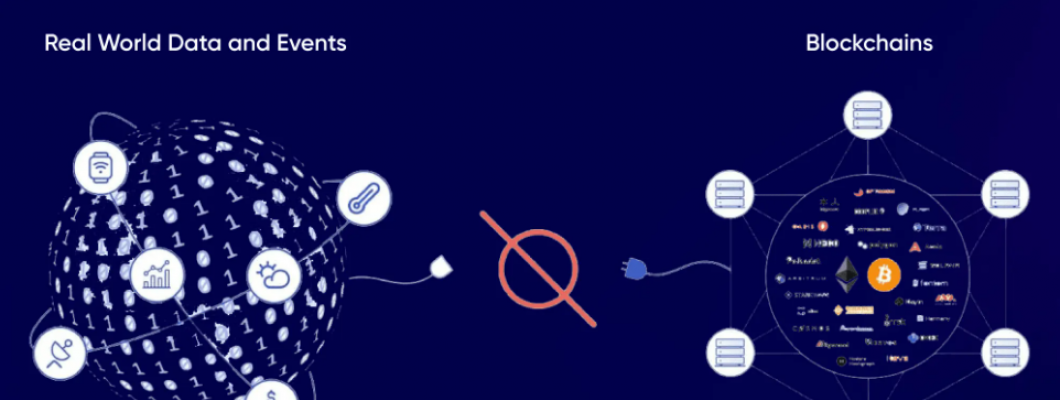
Blockchain technology is designed to be secure, transparent, and decentralized, but it faces a fundamental challenge: it cannot directly access external data. This is where blockchain oracles come in. Oracles act as bridges between smart contracts and real-world data, allowing blockchain applications to interact with external systems.
In this blog, we’ll explore how blockchain oracles work, their types, use cases, security concerns, and best practices for implementation.
What Are Blockchain Oracles?
Blockchain oracles are middleware services that provide smart contracts with external data, enabling them to execute based on real-world events.
Why Do Smart Contracts Need Oracles?
Smart contracts operate within a closed blockchain environment, meaning they cannot fetch external data (e.g., stock prices, weather conditions, or sports scores) on their own. Oracles solve this issue by securely fetching, verifying, and delivering data from external sources to smart contracts.
How Blockchain Oracles Work
Data Request: A smart contract triggers a request for external data.
Oracle Fetches Data: The oracle retrieves data from APIs, IoT devices, or other blockchains.
Verification: The oracle verifies the authenticity of the data using consensus mechanisms.
Data Delivery: The oracle sends the verified data back to the smart contract.
Smart Contract Execution: The contract executes its predefined conditions based on the data received.
Types of Blockchain Oracles
1. Software Oracles
Fetch data from online sources like APIs, databases, and web services.
Example: A smart contract accessing real-time crypto price feeds.
2. Hardware Oracles
Retrieve data from IoT devices, sensors, and biometric scanners.
Example: Smart contracts in supply chains tracking temperature-sensitive goods.
3. Inbound & Outbound Oracles
Inbound: Bring external data into the blockchain. (e.g., weather data for insurance claims)
Outbound: Send blockchain data to external systems. (e.g., notifying a bank of a completed transaction)
4. Centralized & Decentralized Oracles
Centralized Oracles: Controlled by a single entity, increasing security risks.
Decentralized Oracles: Use multiple data sources and consensus mechanisms to ensure trustworthiness.
5. Human Oracles
Experts who manually verify and provide data to smart contracts.
Used in legal contracts, arbitration, and governance models.
Use Cases of Blockchain Oracles
1. Decentralized Finance (DeFi)
Price Feeds: DeFi platforms like Aave and Synthetix use oracles to fetch real-time asset prices.
Lending & Borrowing: Ensures fair interest rates based on external financial data.
2. Smart Insurance
Weather-based insurance using IoT and weather APIs.
Automated claims processing with real-time event triggers.
3. Supply Chain Management
GPS-based oracles track product movement.
Temperature-sensitive goods monitored via IoT sensors.
4. Gaming & NFTs
Oracles fetch real-world events for blockchain-based games.
Dynamic NFTs that change based on external conditions.
5. Sports Betting & Predictions
Smart contracts use oracles to fetch live sports scores.
Automated betting settlements without intermediaries.
6. Governance & DAOs
On-chain governance models that rely on real-world voting or regulatory data.
Challenges & Security Risks in Blockchain Oracles
1. The Oracle Problem
Since oracles fetch data from external sources, they introduce a trust issue—if the oracle is compromised, so is the smart contract.
2. Data Manipulation & Single Points of Failure
Centralized oracles can be attacked, resulting in false data.
Solution: Use decentralized oracles like Chainlink or Band Protocol.
3. Smart Contract Exploits
Poorly integrated oracles can allow flash loan attacks and price manipulation in DeFi.
Solution: Implement secure data aggregation and consensus mechanisms.
4. Latency Issues
Some oracles update data in intervals, which can lead to outdated information.
Solution: Use real-time oracles for time-sensitive applications.
5. Cost of Oracle Services
High gas fees for fetching real-time data.
Solution: Use Layer 2 solutions to reduce costs.
Best Practices for Integrating Oracles in Smart Contracts
1. Choose Decentralized Oracles
Use Chainlink, Band Protocol, API3, or Tellor to ensure secure data feeds.
2. Implement Data Aggregation
Combine multiple oracles to avoid reliance on a single source.
3. Use Trusted APIs & Sources
Fetch data from reputable sources to prevent manipulation.
4. Audit Oracle Integration
Regularly audit smart contracts for security vulnerabilities.
5. Secure Access Control
Implement multi-signature authentication for oracle nodes.
The Future of Blockchain Oracles
Blockchain oracles are evolving rapidly, with innovations like:
Zero-Knowledge Proofs (ZKPs): Enhancing oracle privacy.
Cross-Chain Oracles: Enabling seamless data sharing across multiple blockchains.
AI-Powered Oracles: Using machine learning to analyze and verify data sources.
As blockchain adoption grows, oracles will play a crucial role in expanding smart contract capabilities and enabling more real-world applications.
Conclusion
Blockchain oracles are the key to connecting decentralized networks with real-world data. Whether in DeFi, gaming, supply chains, or governance, they ensure smart contracts function accurately. However, security challenges must be addressed through decentralization, aggregation, and rigorous auditing.

Leave a Comment